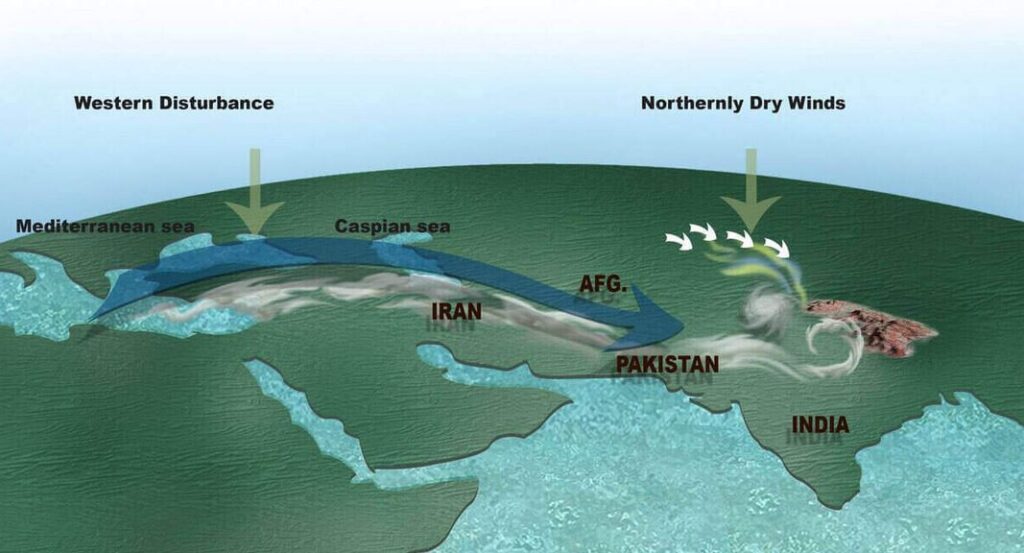Western Disturbances
Western disturbances (WDs) are vital weather systems that bring rainfall and snowfall to the hills of north India. Originating in the Mediterranean region, these disturbances travel eastward, affecting areas like northern Bangladesh and southeastern Nepal. While they induce low pressure systems, resulting in rainfall in plains and snowfall in mountains, their intensity has been declining due to changing climate patterns.
The India Meteorological Department (IMD) highlights a significant decrease in rainfall in regions like Uttarakhand and Himachal Pradesh. Reports indicate a drastic reduction in snowfall in Jammu and Kashmir’s mountains, impacting Rabi crop yields and water availability. With over 80% of Himachal Pradesh’s agricultural land rainfed, irregular rainfall poses challenges for farmers.
Experts attribute this trend to climate change, impacting fruit trees and agricultural planning. Additionally, the El Nino phenomenon contributes to India’s erratic monsoon patterns, leading to decreased rainfall and prolonged dry spells. In Kashmir, El Nino’s effects include milder winters and diminished snowfall, raising concerns about future water availability and agricultural productivity.

Western disturbances originate as extra-tropical cyclones in the Mediterranean Sea, driven by high-pressure areas over regions like Ukraine. This atmospheric phenomenon involves the intrusion of cold air from Polar Regions into areas with warmer, moisture-rich air, creating conditions conducive to cyclogenesis. As a result, eastward-moving extratropical depressions form, traveling across the Middle East before entering the Indian subcontinent.
The impacts of western disturbances are significant:
- They bring moderate to heavy rainfall in low-lying areas and substantial snowfall in mountainous regions of the Indian Subcontinent.
- Typically associated with cloudy skies, higher night temperatures, and unusual rain patterns, these disturbances affect agricultural practices, especially for Rabi crops.
- Excessive precipitation from western disturbances can lead to crop damage, landslides, floods, and avalanches.
- In the Indo-Gangetic plains, they occasionally trigger cold wave conditions and dense fog.
- These climatic conditions persist until another western disturbance disrupts the pattern. Additionally, when western disturbances precede the onset of the monsoon in northwest India, they influence the temporary advancement of monsoon currents in the affected region.
M.C.Q.

- Q. Consider the following statements about Change in western disturbance :
1. Highest amount of rainfall was received.
2. It can be favourable for all yield. Which of the statements given above is/are correct ?
A. 1 only
B. 2 only
C. none
D. BothAnswer : A
- Q. The weather phenomenon known as ‘Western Disturbances’ originates in which of the following geographical regions of world?
A. Siberia region
B. Atlantic Ocean region
C. Mediterranean region
D. Arabian SeaAnswer : C
- Q. Which of the following statements is/are correct with reference to the Western Disturbances?
1. They are shallow cyclonic depressions originating over the eastern Mediterranean Sea.
2. Their arrival in India is characterized by a sudden drop in the prevailing night temperature.
3. It is highly beneficial for Kharif crops in Northern India.
Select the correct answer using the code given below.
A. Only 1
B. Only 1 and 3
C. Only 1 and 2
D. All of theseAnswer : A
